
Xiaomi vs Redmi | Which one should you choose?
Share
Xiaomi, a prominent smartphone brand, offers a range under two distinct names: Mi and Redmi.
While both fall under the Xiaomi umbrella, they cater to different preferences.
This article delves into the key distinctions between these series, guiding you towards the ideal phone for your needs.
Xiaomi vs Redmi Phones: Overview
| Xiaomi | Redmi | |
| Owned by | Xiaomi | Xiaomi |
| Design | Premium designs with Gorilla Glass | Budget/Midrange designs usually with no glass |
| Display | Top of the line AMOLED displays | Good LCD/AMOLED displays |
| Processors | Best of the Best | Decent budget/midrange chips |
| Camera | High quality hardware like large sensors, Optical Image Stabilization, and more | Budget sensors with no special features |
| Software | Latest software with frequent updates for multiple years | Older software and slow updates for 1-2 years max |
| Battery | Large batteries with hyperfast charging and wireless charging | Large batteries with good charging but no wireless charging |
| Price | Starts from 300$ and goes up to 1500+ dollars | Between 100-300$ |
Difference Between Xiaomi and Redmi
If that’s all very confusing or unclear, don’t worry - this guide has you covered. With all of the hype and popularity of both Xiaomi and Redmi smartphones, you might be considering upgrading to a model from either of these brands.
When making any purchase decision, particularly a big one like the smartphone that’s (assumingly) going to be your daily driver for the next few years, it’s always good to get to know brands and what they’re known for, and the kind of market they’re aiming their products and features at.
It’s a great practice as a consumer, and if you’re looking to figure out the difference between Xiaomi and Redmi, you’ve come to the right place.
About Xiaomi
The Xiaomi Corporation is a consumer technology manufacturer based in China, and deals in all kinds of consumer tech like home appliances, mobile devices, office equipment, and plenty of great stuff made affordably in the far east. This, of course, includes smartphones through one of its sub-brands, also called Xiaomi.
Xiaomi smartphones were first introduced back in 2011 with the launch of the Xiaomi Mi 1, which was hardly a commercial hit. Since then, the Mi line of smartphones has acted as the brand’s flagship offerings, designed to go toe-to-toe with the high-end flagship Android phones of the day, particularly Samsung.
About Redmi
Redmi was just a line of budget Xiaomi smartphones that launched back in 2013 with a specific purpose: to bring high-value performance handsets to the budget market. Its first product - the Redmi 1 was a smash hit in 2013, putting the brand on the global radar. In fact, my very first smartphone was the Redmi 1S which came out a year later in 2014, and in the two years I had that handset, I can honestly say it did its job: great performance at budget prices.
In 2019, however, Redmi became a full-fledged sub-brand of Xiaomi, focusing on creating impactful, budget smartphones so that Xiaomi could focus on the larger, potentially more lucrative market for high-end flagships. Today, ten generations of budget-friendly smartphones later, Redmi enjoys an overall positive global response and is currently one of the best-selling smartphone brands in the massive Indian market.
Now that we’ve gotten to know our brands a little better, the difference between them becomes clear. While they’re both smartphone manufacturers under the same corporation, Xiaomi and Redmi are intended to cater to entirely different markets.
Xiaomi dedicates its efforts to its high-end offerings and flagship smartphones to take on Samsung’s Galaxy S series and Apple’s iPhones head-on, while Redmi continues to bring up the rear, offering budget-friendly devices that serve a need for performance handsets in the budget category.
Xiaomi Mi 13 vs Redmi Note 12 Pro
I recently had the opportunity to get my hands on two new smartphones from Xiaomi - the Xiaomi 13 and the Redmi Note 12 Pro. After spending some time with both devices, I must say that they both have their unique features and advantages, but they also differ in several ways. Here's my detailed review of these two smartphones.
Xiaomi Mi 13 vs Redmi Note 12 Pro Specifications
| Specification | Xiaomi Mi 13 | Redmi Note 12 Pro |
|---|---|---|
| Build | Glass front and back, aluminum frame or silicone polymer back | Glass front and back, plastic frame |
| Protection | IP68 dust/water resistant (up to 1.5m for 30 min) | IP53 dust and splash resistant |
| Display | 6.36" OLED, 120Hz, Dolby Vision, HDR10+, 1200 nits (HBM), 1900 nits (peak), 1080x2400px resolution, 20:9 aspect ratio, 414ppi | 6.67" OLED, 1B colors, 120Hz, Dolby Vision, HDR10+, 500 nits (typ), 900 nits (HBM), 1080x2400px resolution, 20:9 aspect ratio, 395ppi |
| Chipset | Qualcomm SM8550-AB Snapdragon 8 Gen 2 | Mediatek MT6877V Dimensity 1080 |
| Memory | 256GB 8GB RAM, 256GB 12GB RAM; UFS 4.0 | 128GB 6GB RAM, 128GB 8GB RAM, 256GB 8GB RAM, 256GB 12GB RAM; UFS 2.2 |
| OS/Software | Android 13, MIUI 14 | Android 12, MIUI 13 |
| Rear Camera | Wide (main): 50 MP Telephoto: 10 MP Ultra wide angle: 12 MP |
Wide (main): 50 MP Ultra wide angle: 8 MP Macro: 2 MP |
| Front Camera | 32 MP | 16 MP |
Xiaomi Mi 13 vs Redmi Note 12 Pro: Display & Design

Let's start with the Xiaomi 13. This device boasts an impressive OLED display with a 120Hz refresh rate, Dolby Vision, HDR10+, and 1200 nits of brightness. The screen is big enough at 6.36 inches, and the 1080x2400px resolution and 414ppi make for sharp and clear visuals.

The design is sleek and stylish, with a glass front and back, aluminum frame, and IP68 dust and water resistance rating. The device feels great in the hand, and the weight of 185g is just perfect.

Moving on to the Redmi Note 12 Pro, this device is also impressive in its own way. The OLED display is slightly bigger at 6.67 inches, with a 120Hz refresh rate, Dolby Vision, and HDR10+. The display also has 500 nits of brightness, which is still great for everyday use.

The design is also sleek, with a glass front and back and a plastic frame. The device feels sturdy and well-made, and the IP53 rating means that it is dust and splash resistant.
Xiaomi Mi 13 vs Redmi Note 12 Pro: Performance
Under the hood, the Xiaomi 13 is powered by the Qualcomm SM8550-AB Snapdragon 8 Gen 2 (4 nm) chipset, which is capable of handling almost anything you throw at it. The device comes with 256GB of storage and 8GB or 12GB of RAM, depending on the model you choose.

This is more than enough for even the most demanding users. The MIUI 14 running on Android 13 is smooth and intuitive, and I had no problems navigating through the menus and applications.
The Redmi Note 12 Pro is powered by the Mediatek MT6877V Dimensity 1080 (6 nm) chipset, which is a capable processor that can handle most tasks with ease.
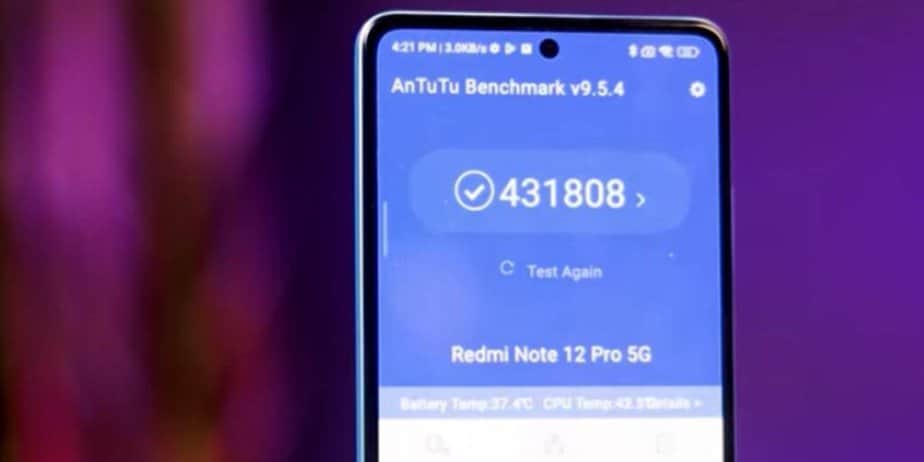
The device comes with 128GB or 256GB of storage and 6GB, 8GB, or 12GB of RAM, depending on the model you choose. The MIUI 13 running on Android 12 is smooth and easy to use, and I had no problems with lag or stuttering.
Xiaomi Mi 13 vs Redmi Note 12 Pro: Camera
The camera setup on the Xiaomi 13 is impressive, with a wide 50MP main camera, 10MP telephoto lens with 3.2x optical zoom, and a 12MP ultra-wide camera.
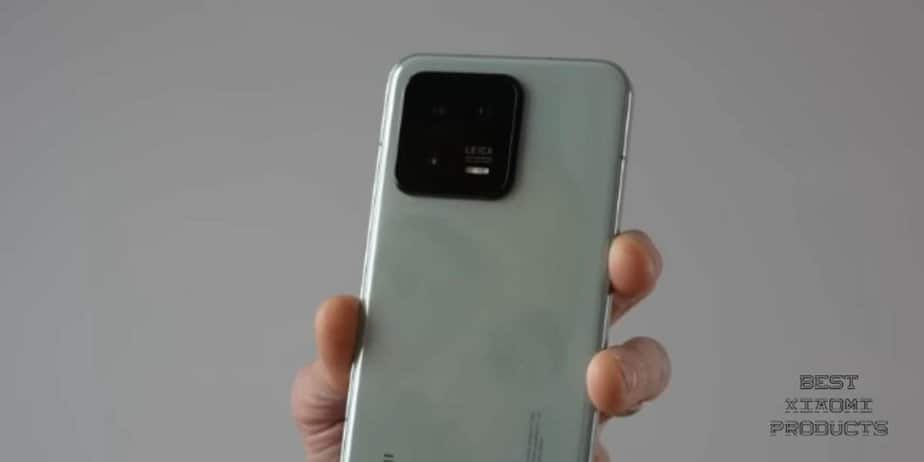
The rear cameras are capable of shooting 8K@24fps, 4K@60fps, and slow-motion videos at 960fps. The front-facing camera is a 32MP sensor, perfect for high-quality selfies and video calls.

The camera setup on the Redmi Note 12 Pro is also impressive, with a 50MP main camera, an 8MP ultra-wide camera, and a 2MP macro camera.

The rear cameras are capable of shooting 4K@30fps videos, while the front-facing camera is a 16MP sensor.
Xiaomi Mi 13 vs Redmi Note 12 Pro: Battery Life
When it comes to battery life, the Xiaomi 13 and Redmi Note 12 Pro both offer impressive specs. The Xiaomi 13 has a 4500mAh battery and supports fast charging up to 67W wired, 50W wireless, and 10W reverse wireless.
The Redmi Note 12 Pro, on the other hand, has a larger 5000mAh battery but only supports 67W wired charging and has a faster advertised charging time of 50% in 15 minutes and 100% in 46 minutes.
In my personal experience using both phones, I found that the Redmi Note 12 Pro's battery life lasted longer throughout the day compared to the Xiaomi 13.
However, the Xiaomi 13's fast charging capabilities make up for the slightly shorter battery life, as I was able to quickly charge the phone to full capacity in under an hour using the wired or wireless charging options.
Overall, if you're looking for a high-end device with impressive camera capabilities and a premium build, the Xiaomi 13 is the better choice. But if you're on a budget and don't need all the bells and whistles, the Redmi Note 12 Pro is still an excellent device that offers great value for its price.
Xiaomi 12 vs Redmi Note 11 Pro: Specifications
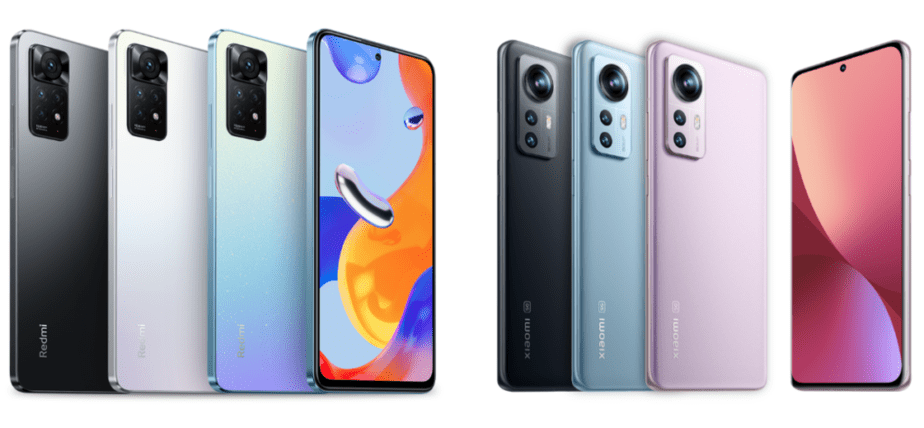
| Redmi Note 11 Pro | Xiaomi 12 | |
| Display | 6.3 inches 1080p 120Hz | 6.7 inches 1080p 120Hz |
| Processor | Mediatek Helio G96 | Snapdragon 8 Gen 1 |
| RAM | 6/8GB | 8/12GB |
| Storage | 64/128GB | 128/256GB |
| Camera | 108MP Primary Wide Lens 8MP Ultrawide Lens 2MP Macro Lens |
50MP Primary Wide Lens 13MP Ultrawide Lens 5MP Telephoto Lens |
| Connectivity | 4G Bluetooth 5.1 WiFi |
5G Bluetooth 5.2 WiFi |
| Software | MIUI 13 over Android 11 | MIUI 13 over Android 12 |
| Battery | 5000 mAh cell with 67W Wired fast charging, no wireless charging | 4500 mAh cell with 67W Wired fast charging and 50W Wireless fast charging |
Xiaomi Mi 11 vs Redmi Note 10
Specifications
| Xiaomi Mi 11 Ultra | Xiaomi Redmi Note 10 | |
| Display | 6.81 inches 1440p 120Hz | 6.67 inches 1080p 120Hz |
| Processor | Snapdragon 888 | Snapdragon 732G |
| RAM | 8/12GB | 6/8GB |
| Storage | 256/512GB | 64/128GB |
| Camera | 50 MP Primary Wide Lens 48MP Periscope Telephoto Lens 48MP Ultrawide Lens |
108 Primary Wide Lens 8Mp Ultrawide Lens 5MP Macro Lens 2MP Depth Lens |
| Connectivity | 5G Bluetooth 5.1 WiFi |
5G Bluetooth 5.0 WiFi |
| Software | MIUI 12.5 over Android 11 | MIUI 12 over Android 11 |
| Battery | 5000 mAh with 67W fast charging (Wired and Wireless) | 5020 mAh cell with 33W fast charging (only wired) |
Performance and Speed

Image from Xiaomi Global
If you compare a Samsung flagship like the Galaxy S21 Ultra, for example, with the brand’s budget offerings like the Samsung Galaxy A50, you’ll notice quite a few things right off the bat: first, a stark difference in price (that much is expected), and second, a stark difference in overall speed and performance. It makes sense, of course, for Samsung to encourage flagship sales by making it pretty obvious which is the superior phone.
However, that’s definitely not what Xiaomi does. Despite being owned by the same parent company, Xiaomi and Redmi go all-out on their devices. Redmi does its absolute best to deliver the best performance and the best experiences despite its low-price targets, and year after year, the brand surprises us with unprecedented power we’d expect from a much more expensive device.
Xiaomi, on the other hand, nearly always goes all-out in terms of speed and performance. Unlike brands like Samsung and Apple which devote billions worth of various resources towards marketing and design shifts, Xiaomi has consistently put everything it has into its flagship smartphones.
The end result: ridiculously high-specced smartphones available at more affordable prices, or at least with a better price-to-performance ratio than anything else on the market. If you’re aiming for the smartphone that gives you the best bang for your buck, you’ll likely find it on the Xiaomi line.
That said, it’s not rare for Xiaomi and Redmi phones to share a handful of the same or similar high-powered components, which means Redmi doesn’t fall too far behind in terms of performance, even with its much lower price tag.
Design and Build Quality - Xiaomi vs Redmi

Image from Xiaomi Global
But if Xiaomi and Redmi phones both offer great performance, then why doesn’t everyone just buy a Redmi instead since it's cheaper?
That’s a great question, and here’s your answer: with Redmi’s mission to deliver performance handsets at budget prices, it’s apparent that this sub-brand focuses more on spec-by-spec improvement. Don’t get us wrong, Redmi phones are pretty well-built, but they’re also a far cry from what you’d call ‘premium’.
In order to keep prices within the budget range, Redmi phones make use of cheaper materials like plastic instead of higher-end materials like glass and ceramic which you’d have no trouble finding on a 2021 flagship smartphone.
It cuts corners elsewhere, too, to achieve a desirable price tag, like shying away from metal frames or anything else that could unnecessarily bump up the cost of production. In short and on the whole, while Redmi phones offer competitive performance and speed, they’ll still feel like a budget smartphone in hand, with some aesthetic decisions to make them at least look more premium.
Xiaomi smartphones, on the other hand, like the latest Mi 11 and Mi 11 Ultra, aren’t as price-restricted, and often come with top-of-the-line materials and build quality on top of their impressive internals.
For example, the Mi 11 Ultra comes with high-durability ceramic which is becoming a mainstay in flagship smartphone design, as well as unique aesthetics that make it easily distinguishable as a cutting-edge smartphone.
Unlike Redmi, Xiaomi has a lot more freedom in what it can do with its devices, which means Mi phones are going to be more polished and premium, as expected of a flagship line.
Battery Life and Charging - Xiaomi vs Redmi
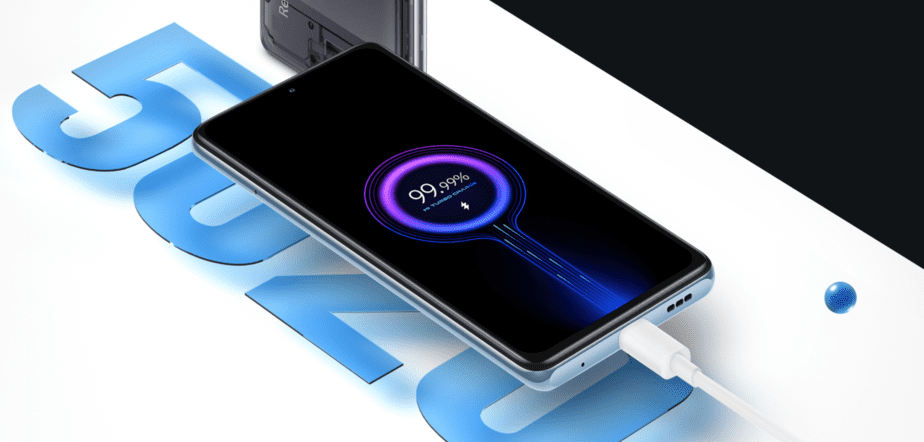
Image from Xiaomi Global
In terms of battery life, Xiaomi and Redmi phones are more or less on-par, with the company reserving some of its best battery and charging features for its high-end line of smartphones.
On a whole, both the Xiaomi and Redmi aim to give their customers reliable all-day batteries (although on some of the latest Xiaomi models, you can even get around two days of use on a single charge).
Battery size differs across models on both of these sub-brands, but if we’re talking about the latest and greatest, then both the Xiaomi Mi 11 Ultra and the Redmi Note 10 Pro come with the biggest smartphone batteries from Xiaomi, clocking in at 5,000 mAh.
Charging speed is the same story. Since Redmi and Xiaomi cater to entirely different markets, they don’t really ‘compete’ with each other, which means they’re free to soup up their smartphones as much as they possibly can.
In terms of charging speed - especially when you’re looking at the latest models - both the Redmi and Xiaomi offer some stellar fast-charging performance. Case in point: the Xiaomi Mi 11 Ultra and the Redmi Note 11 Pro both come with fast charging - 120W for the Xiaomi, and 67W for the Redmi.
On the Mi 11 Ultra, that nets you 0-100% in just a little over half an hour, while on the Redmi, you get 0-100% in just under 45 minutes.
Cameras and Photography - Mi 11 vs Redmi Note 10
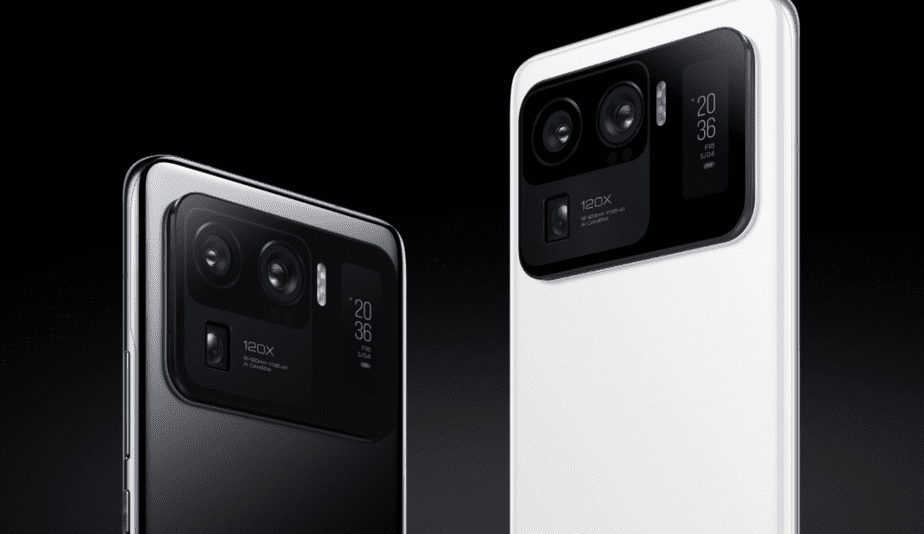
Image from Xiaomi Global
Now, while Xiaomi and Redmi both try their best to give their users as much value as possible out of their handsets - so far in this guide, that’s meant excellent performance and battery life for the price across both brands - one aspect where the difference may be more noticeable is in camera performance.
Flagships like the Xiaomi Mi 11 Ultra, the Samsung Galaxy S21 Ultra, and the Apple iPhone 13, compete heavily with each other for image quality, video quality, and the overall camera experience, and getting ahead in this aspect isn’t just a matter of slapping on the best camera sensors money can buy - it takes a lot of work, both in terms of hardware and software - to create a true flagship camera experience.
In this regard, both Xiaomi and Redmi offer great cameras when you compare them to other products in their price range. However, when you compare them to each other, the Redmi falls behind significantly, because it’s a budget smartphone line. That said, Redmi camera capabilities are no slouch. On the Redmi Note 11 Pro, you’re actually getting one of the best smartphone cameras in the budget category - a triple camera system with a 108MP main camera, an 8MP ultra-wide, and a 2MP telephoto.
Despite that, the Xiaomi Mi 11 Ultra blows it out of the water with an even more powerful triple camera system with top-of-the-line sensors and some high-end features like 8K video recording and powerful AI image processing.
OS and the User Experience
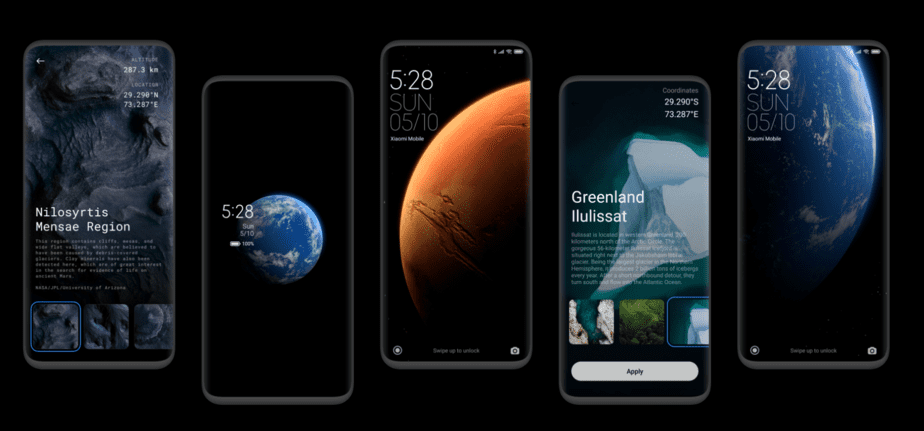
Image from MIUI Global
While Redmi and Xiaomi smartphones offer distinct handsets in their own right - both in terms of aesthetics and performance - but one aspect where they’re more or less identical is in the operating system.
All Xiaomi and Redmi phones run on Android - the version may differ depending on the make and year of your specific handset - with their in-house MIUI skin built on top of it.
MIUI has seen some mixed reception over the years, with the user-base divided between thinking it's the best thing to happen to Android and thinking it’s almost a deal-breaker for Xiaomi and Redmi phones.
Xiaomi recognizes this and even decided to ship some of its smartphones with Android One instead of MIUI, to offer a near-stock Android experience with a focus on the Google ecosystem and services.
Why is Redmi Cheaper?
Now that we’ve discussed Xiaomi and Redmi in detail, it’s time to address the elephant in the room: if Redmi phones are so good, why are they significantly cheaper than the flagship Xiaomi smartphones? It’s not really a trade secret, but the answer is simply because Redmi does a great job of offering their customers as much value out of their smartphones as possible while keeping their products well within the budget range.
Of course, that involves a lot of cost-cutting - cheaper materials and implementing only the essentials - but it also helps that Xiaomi is one of the biggest smartphone manufacturers in the world, allowing them to keep production costs per unit low thanks to economies of scale.
Are Mi phones good?
Yes, Mi phones are premium smartphones from Xiaomi. These include smartphones from Midrange to Highend. They offer excellent specs and features for the price. Mi phones also don't sacrifice build quality and are built with premium materials like Aluminum and glass.
But Xiaomi recently announced that they will be dropping the Mi branding from their smartphones, so moving forward you won't find any Mi phones. For example, Xiaomi Mi 11 is now succeeded by Xiaomi 12.
Are Xiaomi and Redmi the same?
Yes and No. Yes because Redmi is a sub-brand of Xiaomi, they are technically the same. And they are also not the same because Redmi is in direct competition with a number of Xiaomi products. Smartphones like Xiaomi Mi 11 Lite are directly in competition with Redmi Note 11 Pro 5G.
Is Xiaomi better than Redmi?
Xiaomi phones tend to target customers that want the best, while Redmi phones are targeted to offer the best value for money. Redmi phones cost less than $300, while some Xiaomi phones can cost over $1000. So this question doesn't have an answer as you can compare them in the same light. The only answer is that both Xiaomi and Redmi offer good products for their price points.
Also Read: